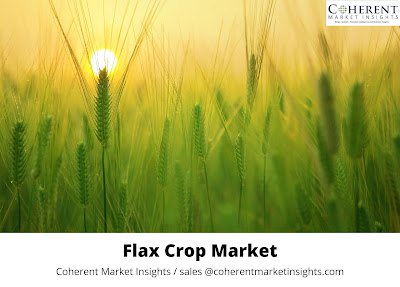
Flax crops that produce white and blue blooms are quickly identified due to their product offers, which include stem, straw, fibers, and seeds. The market for flax crop is developing at a rapid pace, paralleling the increased demand for fiber and seeds from the textile, medicinal, and food industries. They are gaining broad appeal because to their use in pet feeds, omega-enriched food items, and flax oils, and as a result, the flax crop market is expected to increase at a rapid pace.
Weed-free plants are preferred by flax crop processing enterprises due to the optimal use of fertilizers such as potassium, nitrogen, and phosphorus. Furthermore, technology is playing an important part in ensuring a greater production of flax crops, which is projected to boost growth in the worldwide flax crop market in the following year.
When compared to the cotton fiber, flax fiber is more flexible, glossy, and soft in nature. As a result, it's commonly found in linen stitching, fishing nets, carpets, and furniture. It's also a great raw material for firefighting hose pipes, water bags, tissue paper, and knapsacks. These fibers also meet the need for high-quality bond sheets and currency notes, which is another significant growth driver for the flax crop industry.
With increased worries about the health risks and environmental degradation presented by plastic use, several firms have begun to use environmentally friendly packaging materials as part of their eco-responsibility. The fiber derived from flax crops is a suitable commodity for the production of packaging bags and bottles. Furthermore, they are lighter in weight and biodegradable, making them more suited for packaging than plastic. These fibers can potentially be used to replace glass bottles for beer and wine. Because of its promising rate of acceptance, the global flax crop market is expected to grow at a rapid pace in the future years.





0 Comments